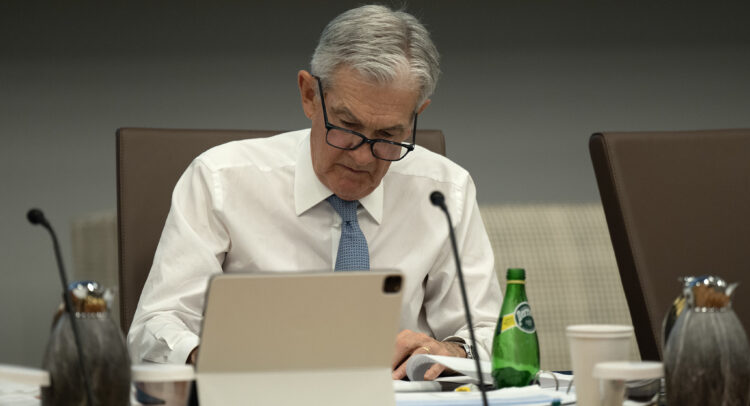Mounting economic data has prompted Fed Fund Futures traders to adjust their bets in response to a robust U.S. economy. This shift is reflected in the CME futures contract, indicating reduced expectations of Powell’s willingness to lower interest rates.
Invest with Confidence:
- Follow TipRanks' Top Wall Street Analysts to uncover their success rate and average return.
- Join thousands of data-driven investors – Build your Smart Portfolio for personalized insights.
Fed funds futures contracts with a December expiration (as of April 8th) reflected expectations of about 60 basis points (bp) in rate cuts this year. The 60 bp shift is a significant change from the beginning of 2024 when the futures contract showed confidence in 150 bp (1.50%) cuts during the year.
The adjustment, while noteworthy, doesn’t indicate a total reversal in expectations and could potentially benefit the stock market. This adjustment is underpinned by robust economic activity.
Understanding the Fed Funds Futures Contracts
The CME is the exchange where financial futures are traded. These interest rate-sensitive futures contracts span maturity periods from overnight to 30 years. While they are intended to serve as cost-effective hedges for investment positions, the Fed funds contract is widely utilized for speculation purposes.
Moreover, futures contracts on Fed funds, which is the overnight bank lending rate controlled by the Fed, trade with massive volume. The changes in price of these contracts are used as an indicator of exactly what the market expects the Fed funds rate to be at the expiration of the contract.
As an example, one of the Fed Funds Futures contracts expires on the last day of December 2024. The trading level of this contract, reflecting the collective insights of all participants, serves as a key indicator for rate expectations throughout the year. This particular Fed Funds futures contract garners significant attention as a leading indicator.
Individual investors don’t even have to wrestle with the numbers to figure out how to use the contract, the CME has an online calculator called ‘The CME FedWatch Tool‘ which translates prices into probabilities, available to the public.
What Does the Change in Rate Expectations Mean?
The latest change in rate expectations has caused interest rates in longer-term U.S. Treasuries to rise. The stock market may take comfort in this.
For over two years, the market had been anxious about the possibility of a recession due to an inverted yield curve (short-term interest rates exceeding long-term rates). However, the inverted yield curve is now flattening. This flattening trend is logical in a scenario where the economy continues to exhibit strength without any evident signs of recessionary pressures. In essence, a previously concerning aspect for the stock market, highlighted since the Fed started tightening, is now evolving into a more optimistic indication for the economy.
The shift in expectations, indicating that overnight rates will not be significantly lowered, has led to the 10-year U.S. Treasury trading at its highest interest rate since November 2023. Concurrently, Fed funds rates remain stable, resulting in a less inverted yield curve.
U.S. Treasury yields are closely influenced by overnight rates, as Fed funds represent the front end of the yield curve. While rates across the curve generally shift in a similar direction, they do not move in perfect alignment with changes in Fed funds rates. For instance, after the Fed increased overnight rates by 5.25% from nearly 0.00%, the yield curve displayed an inverted shape beyond one year to maturity. This outcome occurred because, although rates across all maturities increased, those closer to the Fed funds benchmark experienced the most significant rise, indicating a shift that was not entirely parallel.
Key Takeaway: Don’t Fear the Rate Pause
To sum it up, if the Fed pauses on the expected interest rate decreases, it is because it sees strength in the economy. The stock market thrives on a growing economy. The market displayed fear two years ago regarding tightening rates because it anticipated that the Fed would over-tighten.
It has been over two years since the extensive tightening period between March 2022 and July 2023, during which job numbers have stayed robust, and inflation continues to pose a challenge to control.
Overall, not much has changed for the stock market.









